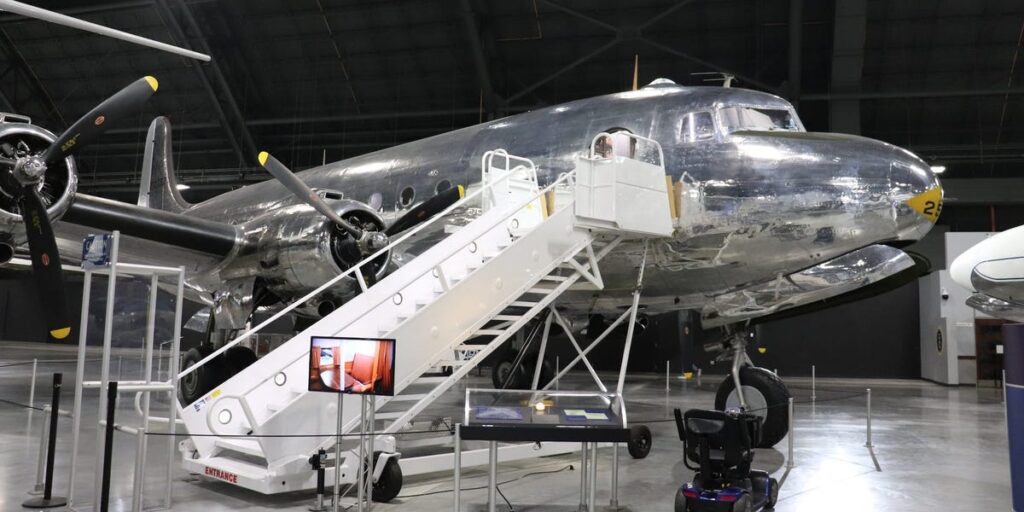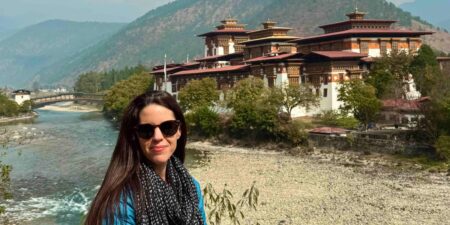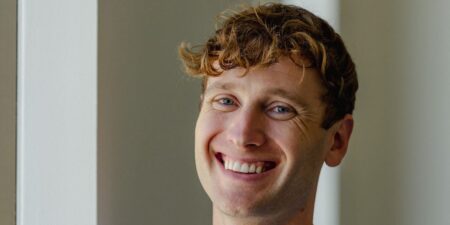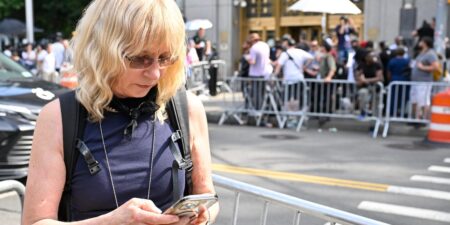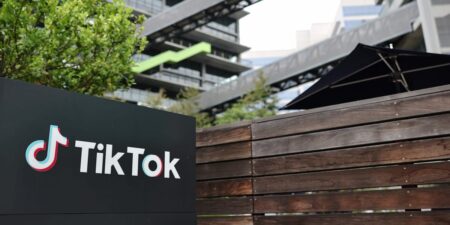X
Bluesky
Copy link
Impact Link
Save
Saved
Read in app
subscribers. Become an Insider
and start reading now.
Have an account? .
- The Douglas VC-54C Skymaster was the first plane built specifically for use by the US president.
- “The Flying White House” became better known by its nickname, the “Sacred Cow.”
- It operated from 1944 to 1961 with an executive conference room and elevator for FDR’s wheelchair.
Compared to today’s luxurious Air Force One jet, the “Sacred Cow” might not look like much, but it marked a significant milestone for air travel and the office of the US president.
The Douglas VC-54C Skymaster, nicknamed the Sacred Cow, entered service in 1944 as the first aircraft built for the president of the United States.
Officially named “The Flying White House,” it featured an executive conference room with a bulletproof window and an elevator shaft for President Franklin D. Roosevelt to board the plane in his wheelchair.
It’s also regarded as the birthplace of the US Air Force. President Harry Truman signed the National Security Act of 1947 while on board, establishing the Air Force as an independent service.
In August, I toured the Douglas VC-54C Skymaster at the National Museum of the US Air Force in Dayton, Ohio. It has been restored and opened to the public. Take a look inside.
The Douglas VC-54C Skymaster was the first aircraft built specifically for use by the president of the United States.
The first presidential plane was built at the order of General Henry “Hap” Arnold, one of the world’s first military aviators who learned to fly from the Wright brothers, according to the US Air Force.
Only one VC-54C plane was ever built using a fuselage from a C-54A and wings from a C-54B.
President Franklin D. Roosevelt flew on the plane just one time — a visit to Crimea for the Yalta Conference in 1945 — before his death later that year. His successor, President Harry Truman, took more frequent trips.
Nicknamed “Sacred Cow,” the plane was retired in 1961 and arrived at the National Museum of the US Air Force in Dayton, Ohio, in 1983.
The nickname “Sacred Cow” was a nod to “the high security surrounding the aircraft and its special status,” according to a plaque at the museum.”
The Douglas VC-54C is now one of several presidential planes on display in the museum’s William E. Boeing Presidential Gallery.
My walk-through of the Sacred Cow began in the cockpit.
The plane was powered by four Pratt and Whitney R-2000 engines, each with 1,450 horsepower. At top speed, it flew at 300 miles per hour.
The radio room was located just behind the flight deck.
The radio room featured a telephone that the president could use to communicate with staff on the ground. In the days before air traffic control, a navigator worked at the fold-out table to determine the plane’s positioning and flight path.
The galley featured an electric refrigerator, a rare luxury on planes in the 1940s.
The galley, where crew members prepared meals, also featured a sink and stovetop.
A small conference area featured two chairs, a table, and curtains.
The cabin wasn’t pressurized, so passengers had to wear oxygen masks when flying at high altitudes.
Stacked above the conference room, a narrow bunk included a pillow, blanket, and seatbelt.
The plane featured seven crew members and could hold 15 passengers.
The executive conference room in the back of the plane functioned as the president’s workspace.
The square window behind the desk where the president sat was the only bulletproof window on board.
The room was equipped with a phone and a folding desk with the presidential seal.
The room also featured a fold-out bed hidden behind the sofa and a private bathroom.
A battery-powered elevator was built for Roosevelt to board the Sacred Cow in his wheelchair.
The elevator shaft was located across from the executive conference room, allowing Roosevelt easy access to the space.
Behind the executive conference room, more meeting spaces were built for the presidential staff.
The area also featured another lavatory.
The Flying White House is a small plane packed with history, making for a fascinating exhibit.
Staff at the National Museum of the US Air Force spent 10 years and 34,000 hours restoring the Sacred Cow to its former glory. The display provides a rare look inside an early presidential aircraft and shows how far Air Force One has come in under a century.
Read the full article here







